|
Aspects of Kentish
Local History |
Fawkham and Ash Archaeological Group
(FAAG)
The discovery
and excavation of a Late Iron-Age and Early Roman Farmstead at
Martin's Quarry (now known at Pinden), Longfield, Kent 1974
and 1979 TQ6084/6842
Copper
Alloy, other Metal including Slag
Copper Alloy
A piece of a copper
alloy bracelet 8cm long and 8mm wide was found in MQ13 (Ditch E), under
MQ9 and 0.120m below the surface of the chalk. When whole, it is
estimated to have been 6cm in diameter, calculated from the 40%
remainder of the circumference.
The bracelet
is decorated with two parallel raised cordons with a slight groove
between them, each punched with near vertical hatching down the centre.
The edges are flatter with a lip at the very edge. In cross section its
thickness rises from 1mm at the edge to a maximum of 4mm in the middle.
At one end
there are notches on the side, three notches on the left side and three
on the right. There are also scratch marks across the end (see
photograph) which may have been caused by the fitting of a clasp.
MQ18 (Pit M) also
contained a thin copper alloy strip now missing. The finds listing for
MQ47 (Ditch ED) show that a metal pin was found but this too is now
missing.
Press Ctrl
and + together, to keep enlarging enlarge picture on your screen. Press
CTRL and zero together to return to normal size
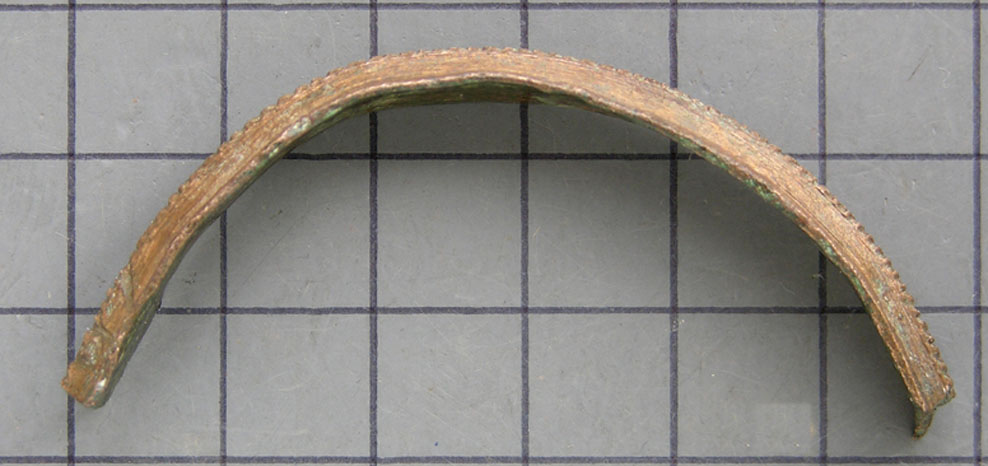
Bracelet from the side (Background
grid to pictures in cm squares)
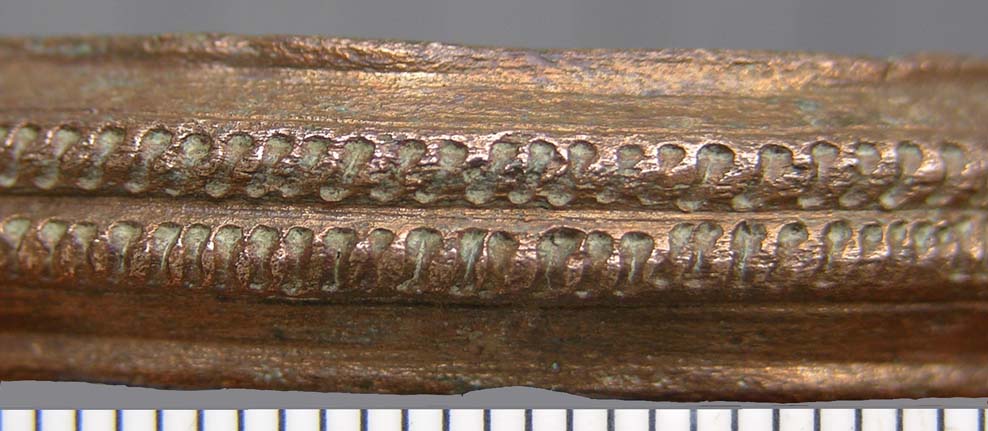
Bracelet from above (scale
in millimetres)
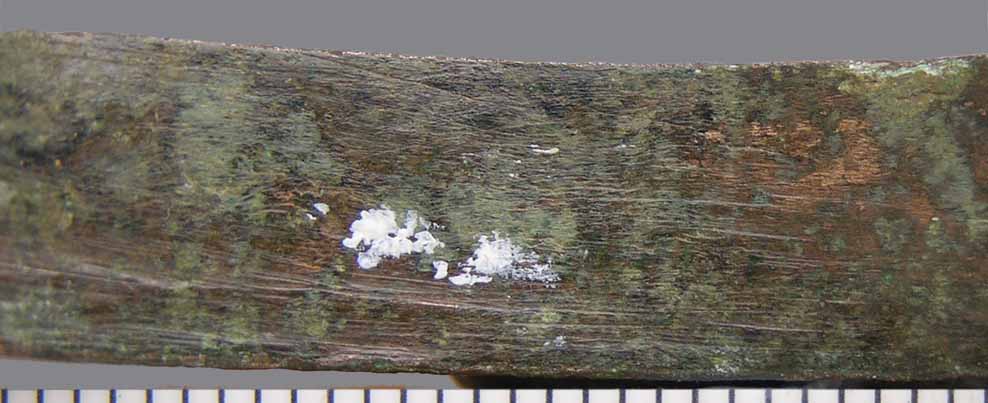
Bracelet from below showing scratches (scale
in millimetres)
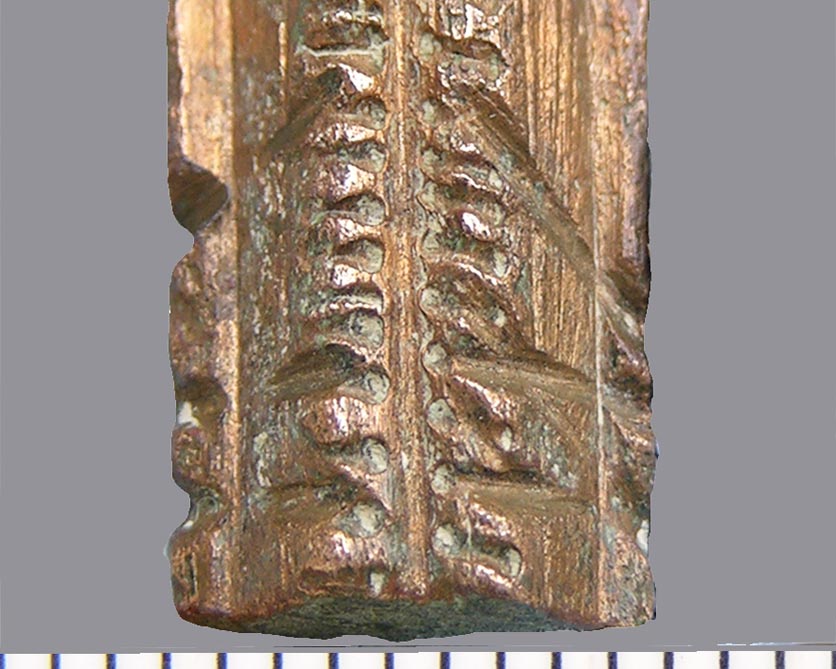
End of bracelet from above showing diagonal
grove for possible clasp attachment
(scale in millimetres)
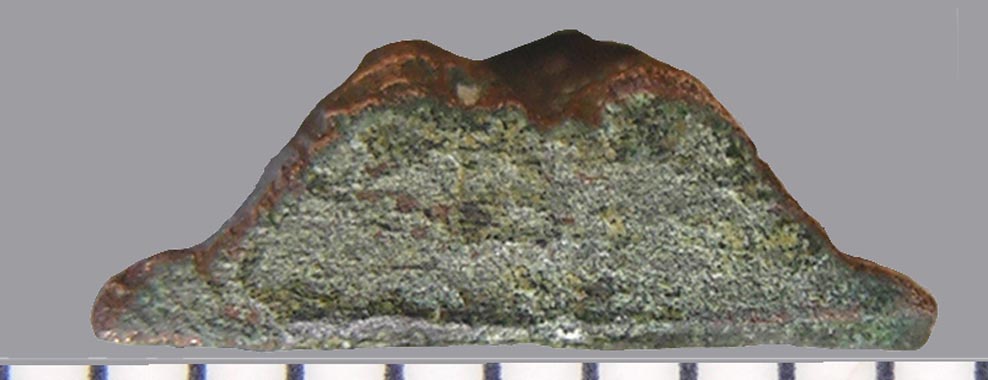
End of bracelet showing profile (scale
in millimetres)
A copper alloy
Colchester type brooch was excavated during the 1974 dig, in MQ17, at the east end of
ditch JJ, 20cm from the north edge of the excavation and at a depth of
25cm. The brooch is 43mm long. It has a flat-sectioned bow, tapered at
the foot, with a single longitudinal ridge beaded down the centre. The
edges of the bow are slightly abraded with evidence of possible file
marks near the catch plate on the right hand side of the front. There is
a triangular perforated catch plate at the base of the bow, with two
circular holes. The spring is complete with nine spring coils. The pin
is broken, the remaining part being approximately 17mm long.
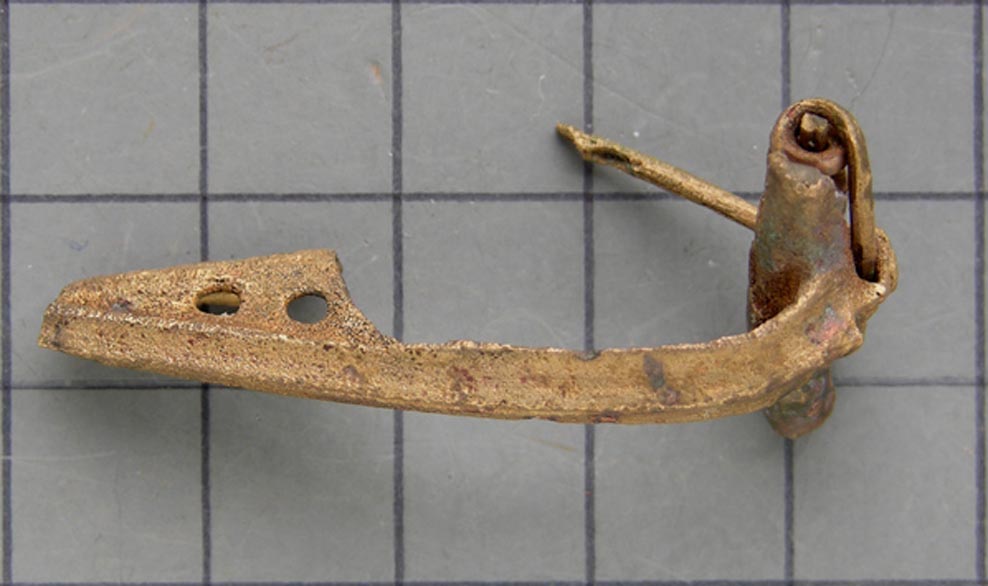
Colchester type brooch (Background
grid to pictures in cm squares)
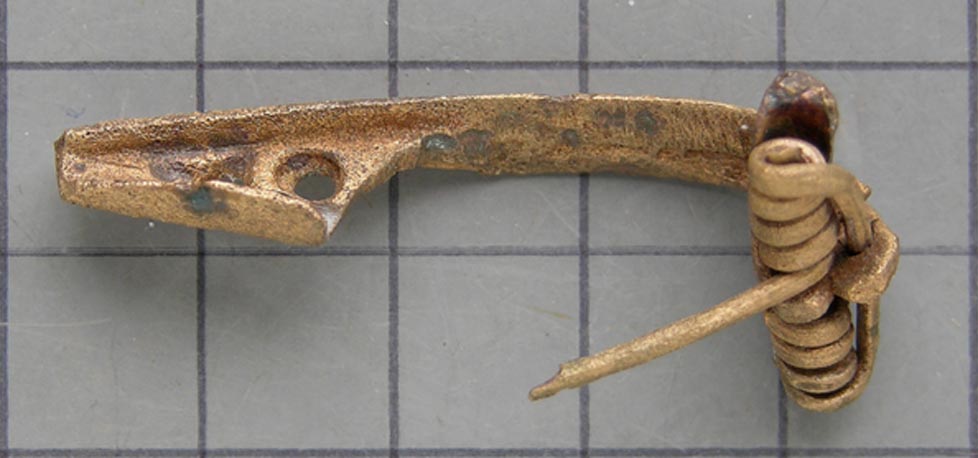
Colchester type brooch (Background
grid to pictures in cm squares)
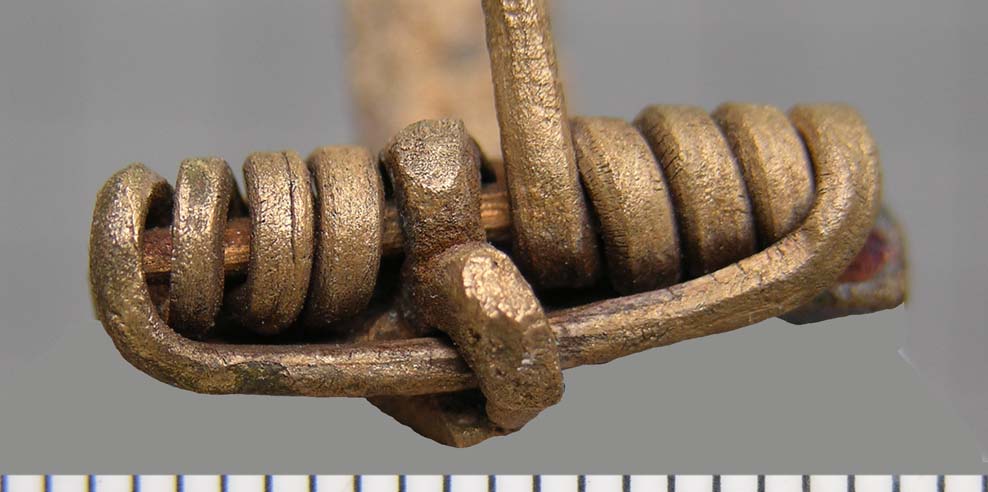
Colchester type brooch showing coiled spring
(scale in millimetres)
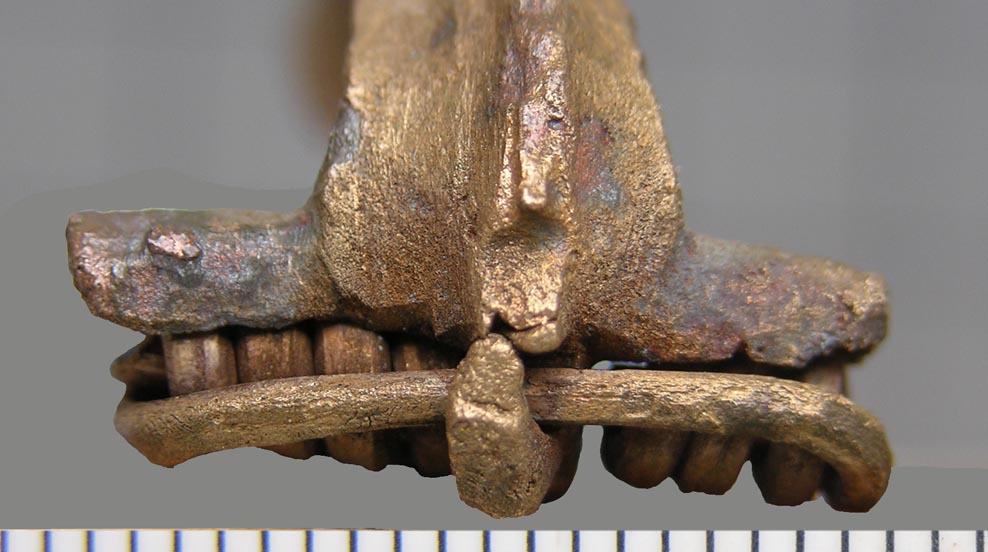
Colchester type brooch showing coiled spring
(scale in millimetres)
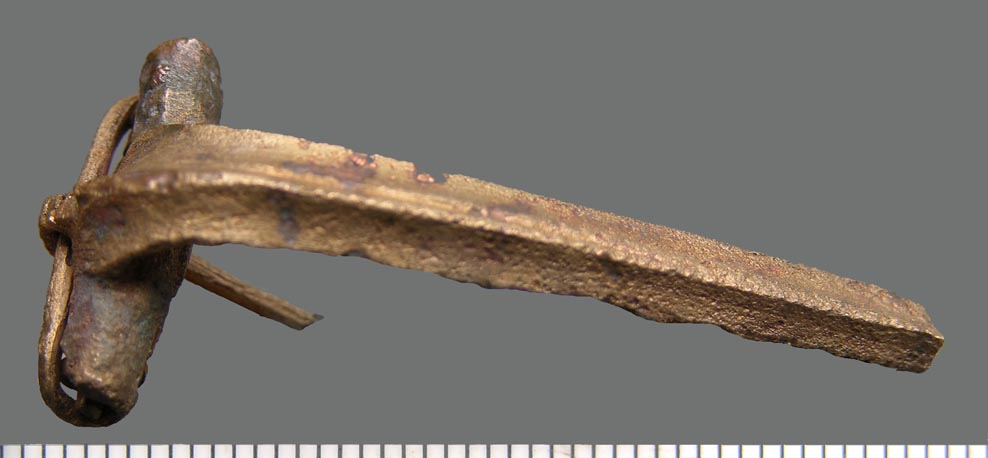
Colchester type brooch showing top of bow (scale in millimetres)
MQ18 (Pit M) also contained a thin copper alloy strip now
missing. The finds listing for MQ47 (Ditch ED) show that a metal pin was
found but this too is now missing.
Slag
Fragments of slag were
found in both excavations, 1974 and 1979. In the earlier excavation slag
was found in the following features: ditches B and JJ and pits L, M, R,
S. In the later excavation slag was found in ditches ED, JA, JE and JF.
The largest
assembly of slag was found in MQ80 (ditch JA). This consisted of 21
pieces varying in weight from 420g to 28g, totalling 1572g. None of it
was magnetic.
This slag was made up of irregular shaped lumps, darkish
brown in colour with occasional traces of red burnt clay adhering to the
side and the occasional trace of black charcoal. Most of the pieces had
conglomerated slag droplets.
Iron
In MQ10 (Ditch J) there
was a rusted nail and a strip of iron, both magnetic. MQ18 (Pit M) also
contained an iron nail 15cm long. Another iron strip was found in MQ25
(Ditch JJ). Small pieces of cast iron, very corroded, were listed in the
notes for MQ71 (Pit JD) – now missing.
No coins were
found during either excavation.
Back
to Contents Page
Return
to Fawkham and Ash Archaeological Group (FAAG) Introduction |